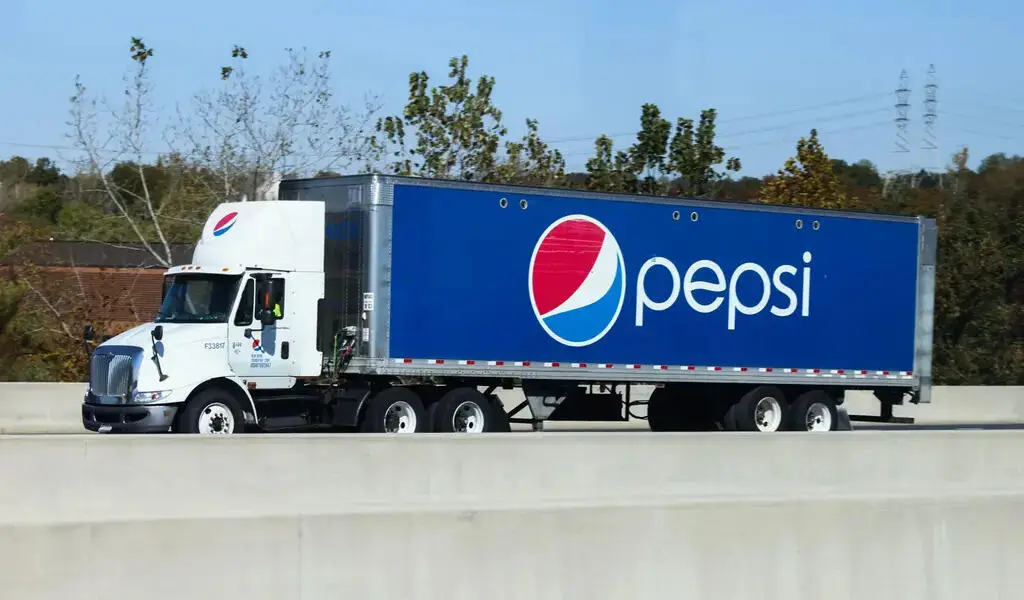Business
How Much Does Executive Coaching Cost?

Executive coaching is vital in the development of an executive. It impacts executives with the knowledge needed to effectively lead the organization they work in.
Executive coaching will greatly help you as a leader to enhance your leadership skills. But just how much does this cost? Costs vary considerably due to the variance of the packages on offer.
Expect anywhere from $10,000 – $30,000 for an executive coaching engagement of six to twelve months. You can expect to be charged from $300 to over $1000 for a coaching session of one hour.
The price of executive coaching services ranges, as the services are not subject to standardization.
What Is Executive Coaching?
Executive coaching is often considered to be part of a leadership training program designed to help all levels of leaders develop their skills and maximize their potential.
It entails a close and personal relationship between an executive and an executive coach.
Executive coaching aims to advance the leaders capabilities so that they can effectively accelerate the performance of the organization they work in.
It is beneficial to both executives and the organizations they lead. A typical executive coaching session with free coaching tools runs for an60 to 90 minutes.
Types of Executive Coaching
- Individual coaching: it involves a one-on-one coaching session between an executive and the executive coach.
- Team coaching: it involves the coaching of two or more individuals in the organization that are working in the same team.
- Group coaching: it involves the coaching of two or more individuals (not always within the same organization) coming together for co-creation on specific topics.
Who Is an Executive Coach?
An executive coach is a professionally qualified person who specializes in helping individuals, teams and organizations with management roles develop their leadership skills and optimize their performance.
Who Needs Executive Coaching?
Executive coaching is designed for anyone with a leadership role in an organization.
It is designed to help executives talent, senior leaders, and C-suite executives (such as CEOs, COOs, CTOs, and CFOs) explore a wide variety of challenges looking to move towards co-created solutions. Human Resources professionals can also benefit from executive coaching.
Executive coaching is no longer limited to operations based executives as many companies now invest in executive coaching for employees at all levels.
What Determines the Price of Executive Coaching?
Some factors that determine the price of executing coaching are:
- The coaches experience level.
- The structure of the coaching package
- Geography.
- The method of coaching.
- The seniority of the client.
- Goals and objectives.
- Salary of the client.
- The period of engagement.
The experience level of the coach
The price of executive coaching is affected by the coach’s experience level.
A new coach or a coach in training would charge less than an experienced coach. The higher the coach’s experience level, the higher the price of a coaching session.
For an engagement period of six months, entry-level coaches charge between $10,000 – $20,000, average-level coaches charge between $25,000 – $35,000, and high-end coach can start from $50,000.

The structure of the coaching package
Many executive coaching services today offer tailored packages for individuals, teams and organizations which combine educational, developmental, facilitation, and coaching.
These may be short 10-week programs or run an entire 12-month period. The package price will vary depending on the coachee numbers, content delivered, and a host of other variables, but may start in price from $5000 for the short programs and move upwards from there.
Geography
The region or country can also affect the price of executive coaching. The price of executive coaching is usually higher in countries with high costs of living (such as the USA and the United Kingdom) and countries with fewer executive coaches.
In the UK, the minimum price for an executive coaching session of two hours is £500, and the median price is £1000.
Coaching sessions typically last for two hours with an engagement period of nine months in the UK. Coaches with little experience charge between £500 – £900 for a session, while coaches with high experience levels can charge above£1500 for a session.
A high-end coach can charge up to £2400 for a session. On average, you can expect to be charged between £10,000 to £20,000 for an executive coaching session of nine months in the UK.
If a country has a low cost of living, then the price of executive coaching would be lower, compared to countries withhigh costs of living. India and South Africa are countries with low costs of living.
In India, it costs between $4000 and $8000 for an executive coaching session of six months. And in South Africa, executive coaching costs between $1400 and $2500 per month.

Method of Coaching
Coaching sessions today are delivered equally online as they are in-person.
Some executive coaches also provide educational and developmental material to their clients.
This can affect the price of the executive coaching. The more resources a coach spends on reaching and supporting a client, the more a session is likely to cost.
Seniority of the client
The higher up a client is in an organization, the higher an executive coach would charge. This is because coaching clients at higher levels are more demanding.
So, when you move up the rank in your organization, you can expect your coach to increase the price of your coaching session. Alternatively, the experience level of the coach is often reflective of the client’s level and the price escalates accordingly.

Goals and objectives of the client
Clients have different goals and objectives. An executive coach can charge clients based on how demanding their goals and objectives are. This may also influence the session and program duration and frequency of each session
Salary of the client
There are executive coaches that base their charge on the client’s monthly salary. Some executive coaches charge their clients10% of their monthly salaries.
So, if you earn a monthly salary of $50,000 then your executive coach would charge you $5000 for a coaching session of one month. Others charge a flat fee.
One such famous example is Marshall Goldsmith who is reported to charge between $100,000 and $250,000 for a 12-month engagement.
Period of engagement
Executive coaching can run for a period of six months, nine months, one year, or two years.
Most executive coaching session runs for a period between six to twelvemonths. The longer the period of engagement, the higher the price.
Note that there may be other factors that affect the price of executive coaching.

Price of Executive Coaching in Some Cities
As stated above prices vary greatly dependant on multiple factors, so detailing prices is not an exact science. The following offers base level, entry pricing for junior executive coaching in several cities:
Singapore
In Singapore, the price of executive coaching ranges fromS$350 – S$2000 per hour. The average price of a one-hour session is S$490. A 3-month engagement of6 sessions costs between S$3600 – S$10000.
Hong Kong
In Hong Kong, an entry-level executive coach charges HK$272 per hour, and the charge scales upwards sharply from there with some senior-level executive coaches charging HK$5000 per hour.
Shanghai
In Shanghai, an entry-level executive coach charges¥247 per hour, however it is common to find coaching packages of seven, 90-minute sessions for senior-level executive run as high as ¥50000.
Conclusion
There is no specific amount that an executive coaching session should cost. The price of executive coaching ranges, based on different factors as mentioned earlier.
Related CTN News:
How to Learn Blockchain Development With Online Blockchain Courses?

Business
PepsiCo Reduces Revenue Projections As North American Snacks And Key International Markets Underperform.

(VOR News) – In the third quarter of this year, Pepsi’s net income was $2.93 billion, which is equivalent to $2.13 per share. This was attributed to the company.
This is in stark contrast to net income of $3.09 billion, which is equivalent to $2.24 per share, during the same period in the previous year. The company’s earnings per share were $2.31 when expenses were excluded.
Net sales decreased by 0.6%, totaling $23.32 billion. Organic sales increased by 1.3% during the quarter when the effects of acquisitions, divestitures, and currency changes are excluded.
Pepsi’s beverage sales fell this quarter.
The most recent report indicates that the beverage and food sectors of the organization experienced a 2% decline in volume. Consumers of all income levels are demonstrating a change in their purchasing habits, as indicated by CEOs’ statements from the previous quarter.
Pepsi’s entire volume was adversely affected by the lackluster demand they encountered in North America. An increasing number of Americans are becoming more frugal, reducing the number of snacks they ingest, and reducing the number of times they purchase at convenience stores.
Furthermore, Laguarta observed that the increase in sales was partially attributed to the election that occurred in Mexico during the month of June.
The most significant decrease in volume was experienced by Quaker Foods North America, which was 13%. In December, the company announced its initial recall in response to a potential salmonella infection.
Due to the probability of an illness, the recall was extended in January. Pepsi officially closed a plant that was implicated in the recalls in June, despite the fact that manufacturing had already been halted.
Jamie Caulfield, the Chief Financial Officer of Pepsi and Laguarta, has indicated that the recalls are beginning to have a lessening effect.
Frito-Lay experienced a 1.5% decline in volume in North America. The company has been striving to improve the value it offers to consumers and the accessibility of its snack line, which includes SunChips, Cheetos, and Stacy’s pita chips, in the retail establishments where it is sold.
Despite the fact that the category as a whole has slowed down in comparison to the results of previous years, the level of activity within the division is progressively increasing.
Pepsi executives issued a statement in which they stated that “Salty and savory snacks have underperformed year-to-date after outperforming packaged food categories in previous years.”
Pepsi will spend more on Doritos and Tostitos in the fall and winter before football season.
The company is currently promoting incentive packets for Tostitos and Ruffles, which contain twenty percent more chips than the standard package.
Pepsi is expanding its product line in order to more effectively target individuals who are health-conscious. The business announced its intention to acquire Siete Foods for a total of $1.2 billion approximately one week ago. The restaurant serves Mexican-American cuisine, which is typically modified to meet the dietary needs of a diverse clientele.
The beverage segment of Pepsi in North America experienced a three percent decrease in volume. Despite the fact that the demand for energy drinks, such as Pepsi’s Rockstar, has decreased as a result of consumers visiting convenience stores, the sales of well-known brands such as Gatorade and Pepsi have seen an increase throughout the quarter.
Laguarta expressed his opinion to the analysts during the company’s conference call, asserting, “I am of the opinion that it is a component of the economic cycle that we are currently experiencing, and that it will reverse itself in the future, once consumers feel better.”
Additionally, it has been noted that the food and beverage markets of South Asia, the Middle East, Latin America, and Africa have experienced a decline in sales volume. The company cut its forecast for organic revenue for the entire year on Tuesday due to the business’s second consecutive quarter of lower-than-anticipated sales.
The company’s performance during the quarter was adversely affected by the Quaker Foods North America recalls, the decrease in demand in the United States, and the interruptions that occurred in specific international markets, as per the statements made by Chief Executive Officer Ramon Laguarta.
Pepsi has revised its forecast for organic sales in 2024, shifting from a 4% growth rate to a low single-digit growth rate. The company reiterated its expectation that the core constant currency profitability per share will increase by a minimum of 8% in comparison to the previous year.
The company’s shares declined by less than one percent during premarket trading. The following discrepancies between the company’s report and the projections of Wall Street were identified by LSEG in a survey of analysts:
SOURCE: CNBC
SEE ALSO:
Old National Bank And Infosys Broaden Their Strategic Partnership.
Business
Old National Bank And Infosys Broaden Their Strategic Partnership.

(VOR News) – Old National Bank, a commercial bank with its headquarters in the Midwest, and Infosys, a firm that specializes in information technology, have recently entered into a strategic expansion of their link, which has been in place for the past four years.
This expansion is more likely to take place sooner rather than later, with the likelihood being higher.
For the purpose of making it possible for Old National Bank to make use of the services, solutions, and platforms that are offered by Infosys, the objective of this expansion is to make it possible for the bank to transform its operations and processes through the application of automation and GenAI, as well as to change significant business areas.
This lets the bank leverage Infosys’ services, solutions, and platforms.
Old National Bank Chairman and CEO Jim Ryan said, “At Old National, we are committed to creating exceptional experiences for both our customers and our fellow employees.”
This statement is applicable to Old National Bank. Infosys is carefully managing the business process innovations that it is putting us through, putting a strong emphasis on efficiency and value growth throughout the process to ensure that it is carried out efficiently.
This is a routine occurrence throughout the entire operation. Because of Infosys’ dedication to our development and success, we are incredibly appreciative of the assistance they have provided.
Old National has been receiving assistance from Infosys in the process of updating its digital environment since the year 2020, according to the aforementioned company.
Ever since that time, the company has been providing assistance. The provision of this assistance has been accomplished through the utilization of a model that is not only powerful but also capable of functioning on its own power.
Infosys currently ranks Old National thirty-first out of the top thirty US banks.
This ranking is based on the fact that Old National is the nation’s largest banking corporation.
It is estimated that the total value of the company’s assets is approximately fifty-three billion dollars, while the assets that are currently being managed by the organization are valued at thirty billion dollars.
Dennis Gada, the Executive Vice President and Global Head of Banking and Financial Services, stated that “Old National Bank and Infosys possess a robust cultural and strategic alignment in the development, management, and enhancement of enterprise-scale solutions to transform the bank’s operations and facilitate growth.”
This remark referenced the exceptional cultural and strategic synergy between the two organizations. Dennis Gada is the one who asserted this claim. This was articulated explicitly concerning the exceptional cultural congruence and strategy alignment of the two organizations.
We are pleased to announce that the implementation of Infosys Topaz will substantially expedite the transformation of Old National Bank’s business processes and customer service protocols. We are exceedingly enthusiastic about this matter. We are quite thrilled about this specific component of the scenario.
Medium-sized banks operating regionally will continue to benefit from our substantial expertise in the sector, technology, and operations. This specific market segment of Infosys will persist in benefiting from our extensive experience. This phenomenon will enable this market sector to sustain substantial growth and efficiency benefits.
SOURCE: THBL
SEE ALSO:
American Water, The Largest Water Utility In US, Is Targeted By A Cyberattack
States Sue TikTok, Claiming Its Platform Is Addictive And Harms The Mental Health Of Children
Qantas Airways Apologizes After R-Rated Film Reportedly Airs On Every Screen During Flight
Business
American Water, The Largest Water Utility In US, Is Targeted By A Cyberattack

The largest regulated water and wastewater utility company in the United States stated Monday that it had been the target of a cyberattack, forcing the company to halt invoicing to consumers.
American Water, The Largest Water Utility In US, Is Targeted By A Cyberattack
American Water, based in New Jersey and serving over 14 million people in 14 states and 18 military facilities, said it learned of the unauthorized activity on Thursday and quickly took precautions, including shutting down certain systems. The business does not believe the attack had an impact on its facilities or operations and said employees were working “around the clock” to determine the origin and scale of the attack.

According to their website, American Water operates over 500 water and wastewater systems in around 1,700 communities across California, Georgia, Hawaii, Illinois, Indiana, Iowa, Kentucky, Maryland, Missouri, New Jersey, Pennsylvania, Tennessee, Virginia, and West Virginia.
SOURCE | AP
-

 News3 years ago
News3 years agoLet’s Know About Ultra High Net Worth Individual
-
Entertainment2 years ago
Mabelle Prior: The Voice of Hope, Resilience, and Diversity Inspiring Generations
-

 Health3 years ago
Health3 years agoHow Much Ivermectin Should You Take?
-

 Tech2 years ago
Tech2 years agoTop Forex Brokers of 2023: Reviews and Analysis for Successful Trading
-

 Lifestyles3 years ago
Lifestyles3 years agoAries Soulmate Signs
-

 Movies2 years ago
Movies2 years agoWhat Should I Do If Disney Plus Keeps Logging Me Out of TV?
-

 Health3 years ago
Health3 years agoCan I Buy Ivermectin Without A Prescription in the USA?
-

 Learning2 years ago
Learning2 years agoVirtual Numbers: What Are They For?
